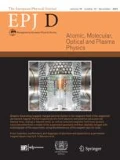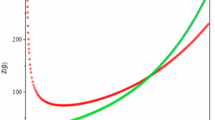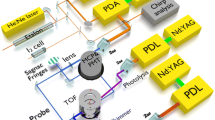Abstract:
It is shown that predissociation can be perceived as a primary process due to the continuum part of a Morse oscillator potential. In the model proposed here internal conversion to the ground state is thus not necessarily the primary process of a consecutive dissociation but may be a simultaneous decay. As a consequence, dissociation rates should show strong variations from specific (ro-) vibrational states of the first excited electronic states that are similar to those known from “pure” internal conversion rates. This behaviour is demonstrated by calculating predissociation rates for the process. Especially the out-of-plane modes seem to play an extraordinary role in the excess energy behaviour of the predissociation rate. At lower excess energies, rates from single vibronic levels with out-of-plane mode characteristics may show an increase by several orders of magnitude.
Similar content being viewed by others
Author information
Authors and Affiliations
Additional information
Received: 13 November 1998
Rights and permissions
About this article
Cite this article
Hornburger, H., Melzig, M. Vibronic state specific predissociation rates from excited electronic states. Eur. Phys. J. D 7, 173–180 (1999). https://doi.org/10.1007/s100530050363
Issue Date:
DOI: https://doi.org/10.1007/s100530050363




